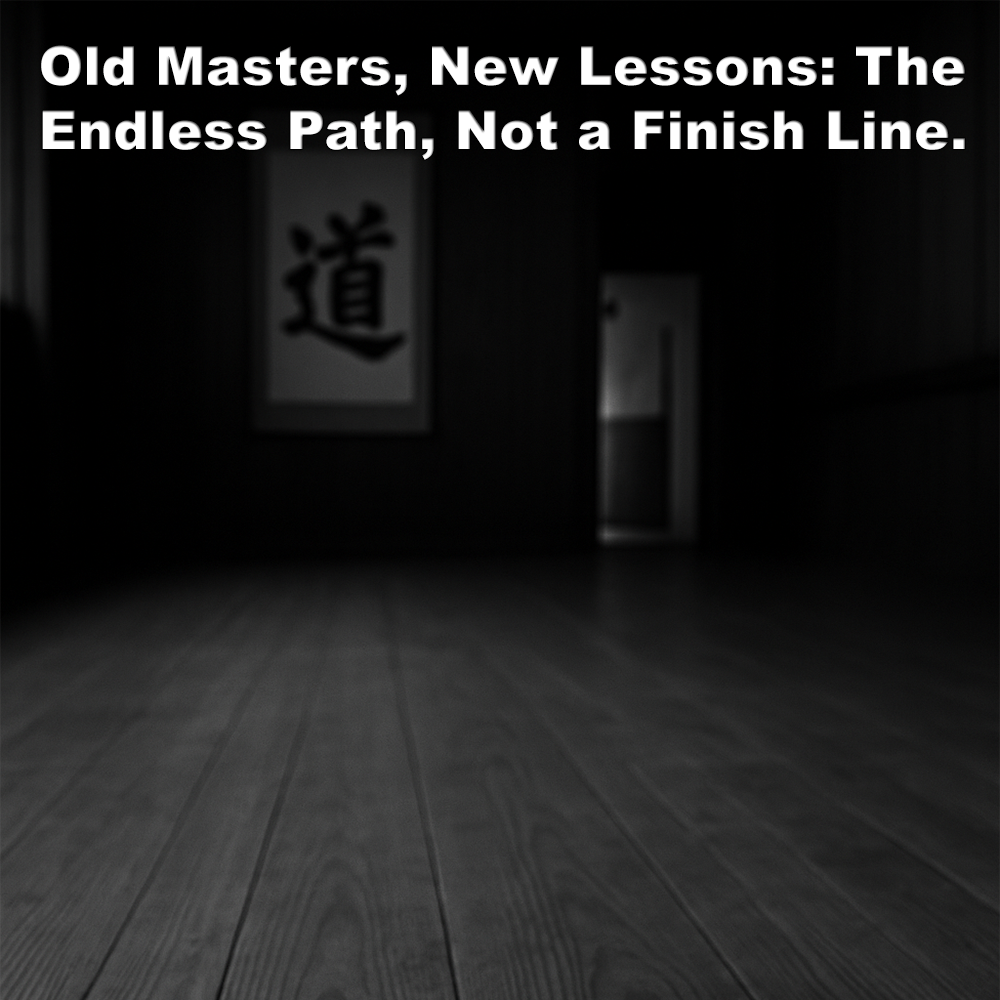
(Approx 2 minute 35 second read)
We call them the old masters, but what did that title truly mean? In an era before standardized ranks, how was genuine mastery actually measured?
.
Mastery in the martial arts is a touchy subject. There are self-proclaimed “masters” that we tend to sneer at. Some styles call instructors a master at a certain level, perhaps as low as 4th dan, some higher. But are they truly masters in the strictest sense?
.
I tend not to mention this, as I feel humbled when I see so many teachers who are highly qualified and respected. I would never place myself in the same conversation as them. However, the highest honor I have been humbly awarded is the formal shogo title of Hanshi, and with it, I was presented with the solid red belt.
.
I rarely wear it, reserving it strictly for formal occasions, though I understand why others might choose to wear it more frequently.
.
Yet I often find myself uncomfortable with the English translation that some people attach to this title: “Master”.
.
In the traditional sense, Hanshi is closer to the translation of “Exemplary Teacher” or “Model Person”. To call yourself a master implies a finish line has been crossed, which contradicts the core belief that the journey is endless. For those of us who have spent decades on this path, the word “master” feels too final, too boastful. I’m more than happy for someone to call me a sensei.
.
So, let’s consider the old masters for a moment.
.
A common theme is their ability to create, some perhaps for their proven ability to fight, others perhaps for their employment as bodyguards. Some were good examples of honor and character, others scholars and officials.
.
We read about their various feats and physical prowess and are inspired. The old masters could make martial methods work.
.
There are some characteristics of mastery that we can recognize, and these form the basis of martial arts as they have been passed down. My interest is in the more pragmatic aspects of mastery.
.
Common to all of them was a thorough knowledge of the basic techniques that worked for them in the context they trained for, and a thorough knowledge of every technique in every kata known by that individual.
.
Today, of course, we have become collectors of many kata; back then, not so much. Their edict was hito-kata san-nen (一形三年): One kata, three years.
.
They had the ability to modify the techniques for various applications. Today we have a name for everything; back then they didn’t. As an example, they would be able to use what we view as simply a punch, to adapt it into something else. It seems that almost any technique could be used in almost any situation if you consider all possible applications.
.
And this is because they had a deep understanding of the few principles that make the larger variety of techniques effective. Once the fundamental principles operate at the intuitive level, it is this depth of understanding, and not the breadth of knowledge, that is significant.
.
Mastery today, however, is an individual achievement and is dependent upon your willingness to research and understand your art, to the point of understanding its messages, and investing the effort necessary to instill this insight into intuitive action.
.
Perhaps true mastery isn’t about recognition at all, but about carrying forward the spirit of those who came before us, to refine, to adapt, and above all, to never stop learning.
.
.
Written by Adam Carter – Shuri Dojo
